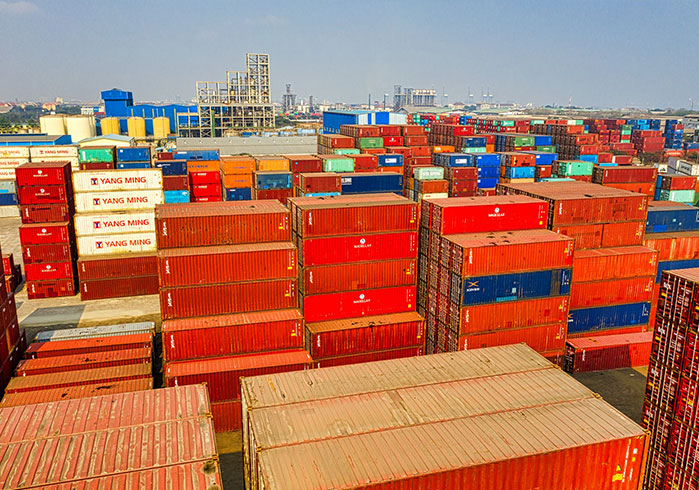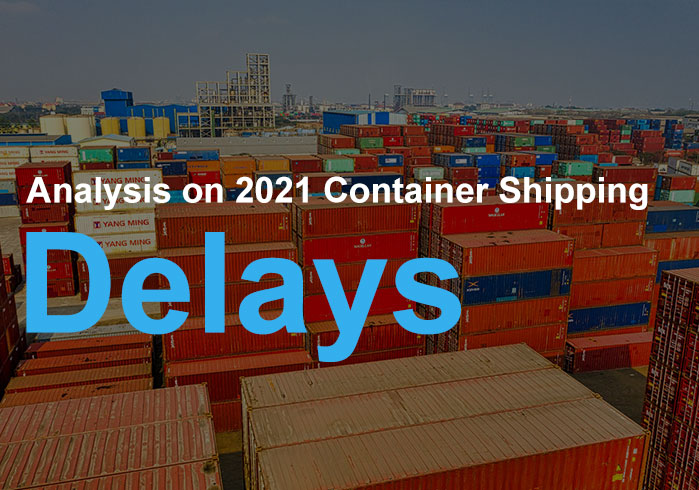
Port congestion that opened up in 2021 is likely to continue throughout this season. If anything, there is an acceleration of container flows as retailers try to catch up with time lost during the COVID-19 shutdown. Besides, the new realities of a socially distanced market mean that e-Commerce is going to take on an importance that it did not have before.
The coming months are going to be a real test of the shipping industry in terms of how it can manage capacity and coordinate to meet the needs of customers. There is plenty of evidence to suggest that demand for shipping space is beginning to exceed that which is available. That is why the Shanghai Containerized Freight Index (SCFI) recently recorded the highest spot rates in history.
Chinese factories are facing challenges of meeting excessive orders that are way beyond their current capacity. As a consequence, production has to come to a halt to accommodate products that have not been picked up yet. The shortage of containers has created temporary “dead ports” that cannot be served in Asia.
The global crisis that was accelerated by COVID-19 is haunting us in 2021. The unusually late-year surge in imports during 2020 has continued this year. The trans-Pacific eastbound space is now sold out because of this. The impact of the Chinese New Year when factories shutdown has also created an additional backlog.
Meanwhile purchasing patterns are continuing to evolve in response to the unique set of circumstances created by the COVID-19 pandemic. Take for example the increased emphasis on the purchase of household goods via e-Commerce platforms. This type of demand is effectively a replacement for the declining market for leisure and travel as people focus on social distancing as a preventative method against infection.
Expert Opinions
The experts are of the view that the status quo is likely to continue, for a few months at the very least and even possibly much longer. Patrick Fay of BOC International in Boston does not see any slowdown forthcoming for shipping space. This is despite the anticipated slack that tends to happen around June and July. By the time the peak of 2021 starts in June and July, the upsurge in demand that opened in 2021 will be ongoing.
Following concern about tight capacity on the Eastbound Trans-Pacific route, many large importers extended existing contracts through 2022 at much higher rates when they had the opportunity last fall. This was done as a preventative measure so that they would not be forced to compete in an even higher spot market. Given the uncertainty of the current market, carriers such as Mediterranean Shipping Co., CMA CGM, and Yang Ming are requiring rates that are much higher than their published spot rates.
Such price differentials are particularly prominent regarding premium or preferential services. Examples of the sought-after perks include guaranteed space, sure-deal equipment, more space on the ship, and finally the ultimate prize of expedited processing. This comes at a time when shippers are dealing with long queues and significant waiting times.
Even with the higher quotes and prices, there is no guarantee of premium space. Forwarders like John Hextall of the De Well Group are coming to terms with the notion of “beneficial cargo owners” having to shop at multiple levels and engaging with different non-vessel operating common carriers to identify any usable space.
Those who are not booked for the pre-Chinese New Year already missed the boat and have to go to the back of the queue. Although it had been expected that by the end of 2020 there would be some respite; the container shipping markets continue to be tight. The average spot rates and contract rates are continuing to rise according to Alan Murphy of Sea-Intelligence Maritime Analysis.
The statistics are startling. For example, recently the SCFI rate from Shanghai to the East Coast of South America exceeded $8,000 per TEU. This is a notable milestone given the fact that the SCFI rate has never been above $8,000 before. Lars Jensen of SeaIntelligence Consulting is one of the industry experts raising the alarm on a tightening and ultimately expensive market.
Contract Extensions
There have been some significant contract extensions to at least April 2022; a precautionary measure in this competitive market. Industry sources indicate that some large importers extended their contracts with carriers. This was sometimes achieved through rewriting existing contracts in November 2020.
The extensions offered rates of $2,500 per FEU up to April 2022. This is a rather big uptick from the previous rates of $1,500 per FEU. The expectation is that these precautionary measures will assist shippers when trying to sidestep the price competition in the tight market. Nobody wants to be caught in a situation where the premium panic market is their only viable alternative.
Additionally, the industry is undergoing structural changes to accommodate the increased demand. For example, that capacity that had been withdrawn in the wake of the COVID-19 pandemic has largely been restored. This is an acknowledgment that the trajectory of sea trade in the COVID-19 era has not always followed the script of falling demand.
Instead, there is high competition for vessel space, capacity, and equipment. Whereas the global pool of shipping companies cannot adequately meet this demand, existing contracts are being modified to lock-in contract prices. Daniel Richards of Maritime Strategies International argues that the containership charter market is effectively ‘sold out’ across vessel sizes.
With the Chinese New Year just around the corner, there are very few blank sailings. Only 2%-4% of the three-week capacity for the Chinese New Year has been blanked on the trans-Pacific route. The shortages of container equipment that started in the middle of 2020 have only gotten worse with time. For example, the global container fleet grew at a cumulative annual rate of nearly 5% over the past ten years, as reported by Textainer.
However, that growth slowed to just 1% in 2020. This slow down is likely due to the early year impact of the pandemic in China. It has significant negative impacts on major manufacturers such as China International Marine Containers (CIMC), which produces approximately 50% of all dry containers across the globe.
Effects on Asia
The market as it stands has been hard on Asian load ports, with lots of disruptive shortages throughout the supply chain. In some instances, US exporters have raised complaints with legislators and senior politicians about the difficulty of obtaining bookings on carriers. Indeed, there have been instances of repositioning empty containers back to Asia since the processing time is just too long.
It makes sense to take this extreme measure if you want to benefit from higher-paying imports as opposed to waiting for low-value exports to accumulate. Factors in China are pleading with forwarders to pick up pending products that have already been manufactured and only waiting for shipping. The Chinese Ministry of Transport (MOT) has become involved to curb the crisis.
As a consequence, MOT has announced that as of 29th December 2020, it will take responsibility for supervising and coordinating all relevant shipping companies. The aim is to increase capacity in a sustainable way that fits the needs of the customers. Such action is necessary because there are smaller Asia ports that may not open to full capacity in the immediate future.
Meanwhile, the staff at the so-called “dead ports” are frantically looking for carriers to give them containers so that they can reactivate their business. Port rotation has become a nightmare and some are just closing down specific lines with the equipment being redeployed elsewhere. Until US imports slow down, this disequilibrium is bound to continue.
Wrapping Up
The era of COVID-19 was expected to reduce demand for shipping services given the lockdown measures. What happened instead was the rising popularity of e-Commerce. Specifically, imports from China and Asia are rising faster than the low-value exports from the USA. This has turned the Trans-Pacific route into a congested market. Some big shippers have decided to extend older contracts to guarantee space and equipment up to 2022. However, the experts are of the view that demand will continue to exceed supply in the shipping industry, particularly as it relates to the routes from Asia to the USA.





2 Comments on “Analysis on 2021 Container Shipping Delays”
I really appreciated your quality work.
APPRECITE AMANDA’S DEEP INSIGHT ON THE CHALLANGE AND GIVES A DIRECTION OF FUTURE TO BUSINESSESS TO TAKE APPROPRIATE DECISIONS…GREAT WORK.